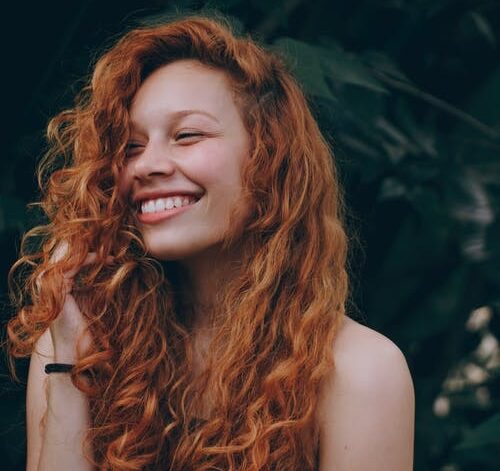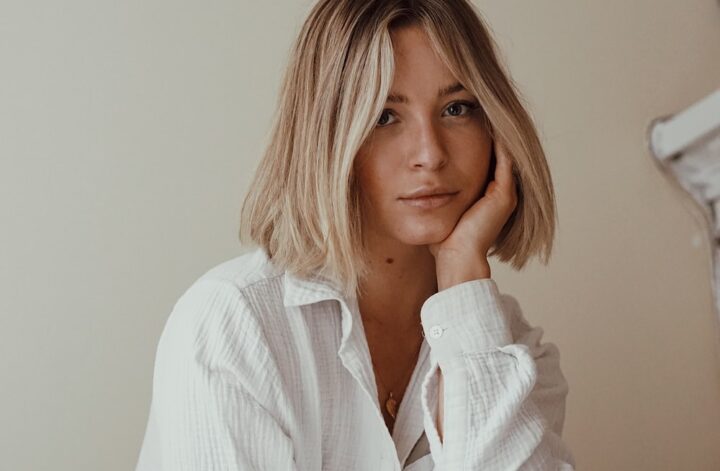The first step in empowerment is understanding. This post is for anyone who has experienced frustration with their color and not understood why, or for anyone considering a big color change. Learning how to understand hair color, shades and tones will empower you to make more informed decisions about your hair.
The shade, or depth of your hair is how light or dark it is. On a hair color box, the shade is represented by the first number, with 1 being the darkest black and 10 being the lightest platinum blonde. The tone refers to the degree of warmth or coolness in your hair. The tone is represented by the second and third number, which vary depending on the specific color brand. I have included tables and images below.
In this post I will go into greater detail about what the difference between tones and shades are, how to read the hair color numbers on the box and how to determine yours in order to formulate the correct color based on your goals.
Color shades, also known as depth

The shade of your hair color is simply how light or dark it is. This will also determine how much warmth you have in your hair naturally. The darker the hair, more underlying warmth. For this reason it is difficult to achieve a clean blonde on hair that is darker than a level 6. The warm undertones in our hair are what causes the hair to look ‘brassy’ when lightened with bleach.
It is not to say that a clean blonde cannot be achieved on darker hair tones by a professional. Though it should be noted that the hair health might be compromised, as well as requiring a higher financial investment as it can take multiple sessions to achieve the desired result.
Ideally one would not venture further than 2/3 shades from their natural color. This would ensure minimum compromise on hair quality and also prevent extremely high maintenance color. Unless you are willing to invest time and money in frequent salon visits and high quality home care, more than 3 shades difference should be avoided.
Color tones, or undertones
The coding for color tones vary slightly from brand to brand. Once you have a basic color theory knowledge it is fairly straightforward to change brands as color theory always remains the same. It is important to be aware of this and read the name of the color before making a selection for this reason.
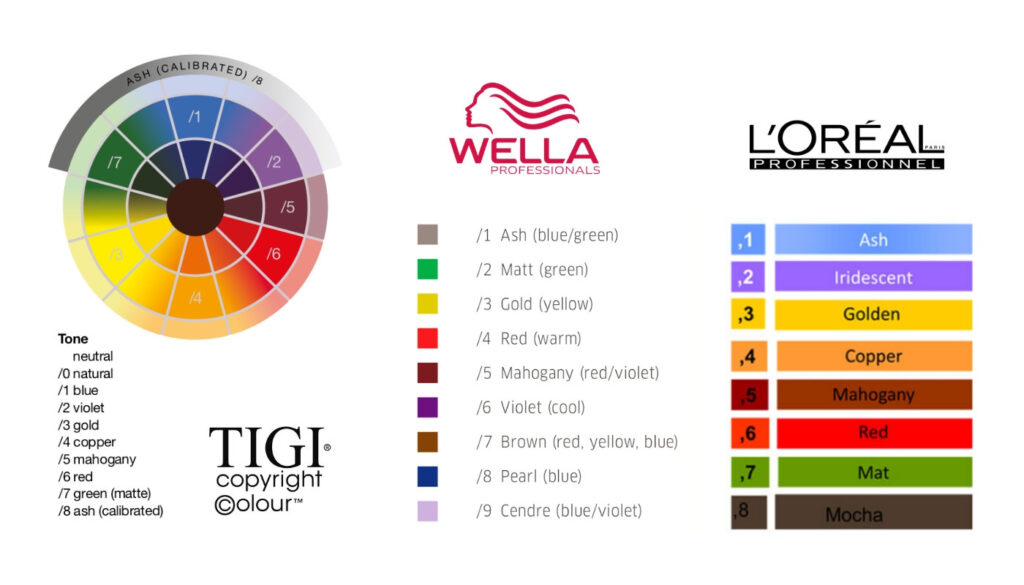
Double digits
The tone can be represented in double digits. The first number represents the major tone of color and the second represents the minor tone. In other words, the first number will be the dominant tone.
For example, using Wella, /3 is gold and /4 is red. This means if the number read /34 it would be golden red (with more gold than red). If the number read /43 it would be red golden (with more red than gold).
Compare below 7/34 (more gold)

with 7/43 (more red)

The difference may seem subtle when viewed on a small swab on your phone or computer screen, but on a full head of hair they are considerably different.
Letter representation of tones
The letter representation works in the exact same way, so instead of /1 (ash) it would be /A. Or instead of /0 (neutral) it would be /N. Instead of /01 (neutral ash) it would be /NA. The letters will often be combined, in the same way as the number. The first of the two letters representing the major tone and the second representing the minor tone.
- A – Ash
- B – Brown
- C – Copper
- G – Gold
- M – Mahogany
- N – Neutral (grey coverage)
- P – Pearl (blue)
- R – Red
- V – Violet
Grey coverage
/0 is neutral, meaning an equal amount of primary colors. This is the tone that would be used for hair that requires grey coverage. It is possible to add a secondary tone, for instance if a you wanted a cool tone you could add /1 (ash) but it would be necessary to have at least half of the formula neutral for grey coverage. For example, if your hair is a 6 base (shade) you could add half 6/0 with half 6/1.
For resistant grey hair it is advised to use /0 (neutral) only, and be sure to leave it to process for the full amount of time as recommended by the manufacturer. So if your hair is a 6 base (shade) you would use 6/0.
The color wheel
Did your hair ever go green from swimming as a child and you were told to put ketchup on it to remove the green? Well, the color wheel will give us an understanding of why and how that works. Fundamental to color theory, the color wheel is what determines the tone needed to achieve the desired result for your hair.
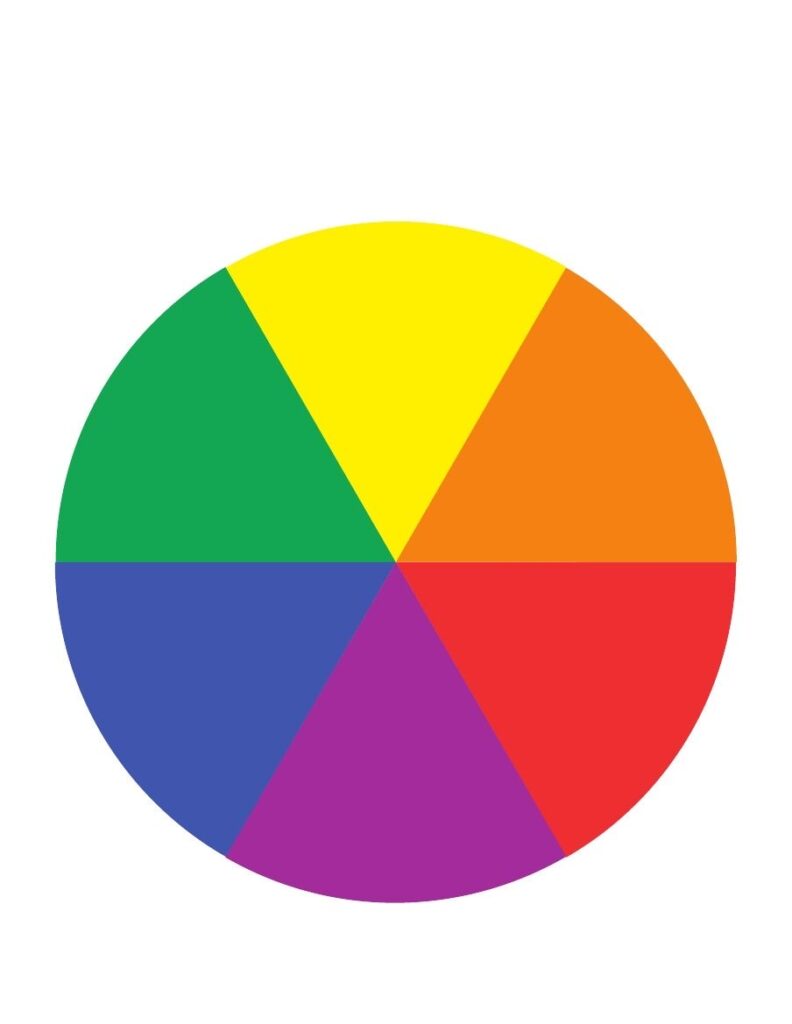
You might be wondering why we have shades like violet, green or pearl (blue) in our basic, every day hair colors? Let us look at the ketchup example used above. When we observe the color wheel, we can see that each color has it’s opposite. The opposite color on the chart will neutralize the color, so red is the opposite of green, therefore ketchup should remove green tones from hair. I’m not suggesting you should use ketchup on your hair at all, but it is a good illustration of basic color theory.
Basic color formulation for toning
Anyone who has blonde hair will be familiar with purple shampoo. This works the same way, as purple is opposite to yellow. The purple shampoo will neutralize yellow tones in a similar way to the toner used in a salon.
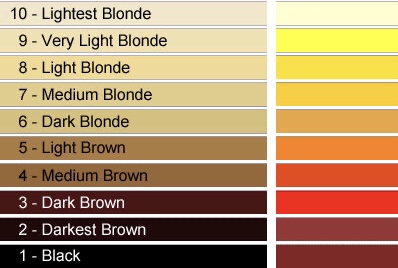
As we learned earlier, the darker our natural shade is, the more warmth it has. Therefore when lightening the hair, it will go through stages of lightness and warmth as illustrated above. If we start at a level 4 or 5 (left) and want to achieve a level 9, we have to go through all four stages of underlying pigment (right) and the undertone will need to be neutralized using a toner.
This is done by essentially mixing the opposite color on the color wheel to create a neutral or ‘beige’ blonde. If you or anyone you know has ever attempted to bleach their own hair at home (please don’t!) you will have seen the bright, warm tones on the right of the illustration above.
It goes without saying that toning is an art in itself and there are many subtleties involved that could not be covered in a short blog post. The objective here is not for you to become a fully trained colorist, rather to arm you with a greater understanding so you can make more informed choices for your hair.
Related questions:
Why does my hair always fade warm and/ or brassy?
The underlying pigment illustration explains why hair color always fades warm. It is one of those things that are simply unavoidable. No matter the starting point, when you color your hair, it will fade warm. The only way to avoid this is to not color your hair at all, or to maintain your color regularly with frequent hair appointments to tone or touch up your color as well as high quality home care.
This is the reason why I often recommend to my clients to look at coloring their hair from a different angle. Rather than completely changing their color, look at enhancing the natural color. For example, soft, strategically placed balayage while leaving the base (the majority) of your hair natural. This will brighten your hair without creating a cycle of maintenance.
Even for grey coverage I often prefer to do subtle baby lights which tricks the eye by blending the grey, softening the overall look. I have clients coming in all the time with just a few greys and they say to me that they guess it’s time to start coloring their hair. I always ask: ‘why?’
Should I color my hair?
The current wave is heading towards more sustainable, healthy and lower maintenance hair. There are a few questions to ask oneself before making a big hair decision:
- Is it for you or for the way you think people perceive you?
- Will it make you feel more beautiful and cared for?
- Are you willing to invest time and money to maintain it well?
- Are your goals realistic? (Eg: if your hair is a natural base 4 it is not realistic to aim for platinum blonde)
If you are unsure about the answers to any of these questions, perhaps booking a hair consultation to gain some clarity is a good idea.
In conclusion
Information is power. Understanding basic color theory will help you to gain clarity on any issues you might be having with your color as well as knowing what goals are realistic for your hair. This post is not intended to encourage home coloring, rather to equip you with knowledge so that you can make better and more informed choices for your hair.
As always if you have any questions or comments feel free to ask, I’m always happy to hear from you.
Remember to pin this to your boards so you can come back to it later!
